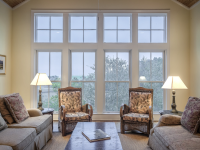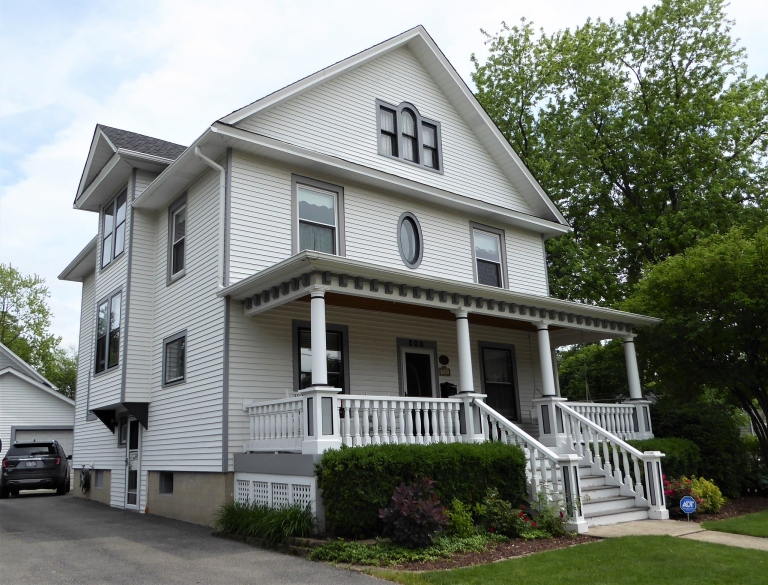If there is one type of pest you don’t want to be dealing with in your home, it is termites. Able to inflict substantial damage to your home if left to do so, termite damage can often cost thousands of dollars to repair. Needless to say, you want to prevent this problem if at all possible. Unfortunately, termites tend to love older homes. To make sure your older home is not the next stop for a termite infestation, here are some tips you can use to keep these pests out of your home.
Keep Vegetation Away from the Foundation
If you can, begin by removing any vegetation or mulch that may be coming into direct contact with your home’s foundation or nearby wood surfaces. If you allow vines or other vegetation to completely cover your home’s foundation, this becomes a perfect breeding ground for termites.
Trim Trees and Bushes Regularly
Trees and bushes are two of the most common types of vegetation that can encroach on the foundation of your home. To prevent this from happening, try to keep them trimmed back at least 4 feet away from the walls of your house. This will help ensure that they don’t get too close and start causing problems for your foundation. If trees or bushes have already grown too close, then you may need to consider removing them entirely – especially if they are large enough to cause significant damage if left unchecked.
Install Mulch Barriers
Mulch is often used in landscaping because it helps retain moisture and keeps weeds at bay. Unfortunately, mulch can also attract pests like termites which can be detrimental to the health of your home’s foundation. To prevent this from happening, install a barrier between any mulched areas and the walls of your house. A thick plastic liner should do the trick nicely – just make sure that it has at least 6 inches of space between itself and the wall so that there isn’t any contact with soil or mulch below it.
Add Rocks Around Your Home
Rocks are great for keeping vegetation away from the foundation because they don’t retain moisture as mulch does. Plus, rocks won’t attract bugs or other pests either! Try adding a few inches worth around all sides of your home as an extra precautionary measure against plant growth near your house’s walls. Just make sure not to stack them too high or else they could become unstable over time and cause more harm than good!
Replace Old Wood with Treated Wood
Naturally, your older home will of course have older wood. While you may not be able to completely replace all of the older wood, you can replace older wood that comes into direct contact with soil around your home. Typically, this will include replacing latticework, deck support posts and beams, fences, retaining walls, and anything else with treated wood or other types of treated materials.
Types of Treatment for Treated Wood
When selecting treated wood for your project, you’ll first need to determine which type of treatment is best suited to your needs. There are two primary types of treatment available: pressure-treated and non-pressure-treated. Pressure-treated wood has been subjected to high pressure while being soaked in a chemical solution that makes it moisture-resistant and insect-repellent. Non-pressure-treated wood is soaked in a chemical mixture without being exposed to high pressure; its primary benefit is protection from rot and decay caused by weather elements such as rain or snow.
Advantages of Using Treated Wood
Treated wood offers several advantages over other types of lumber, including a longer lifespan and improved resistance to rot, decay, mold, mildew, and pests like termites. Additionally, treated wood comes pre-stained or pre-painted so that it does not require additional staining or painting after installation; this helps save time on projects since it eliminates the need for extra steps like sanding or sealing. Finally, treated wood is more cost-effective than other options since it does not require frequent maintenance or replacement due to damage caused by water or insects.
How To Use Treated Wood For Your Projects
When working with treated wood for any project around your home, there are some important safety considerations you should keep in mind. As with any type of building material, wearing proper safety gear—such as gloves and goggles—is essential when handling treated lumber. Additionally, be sure to wash your hands thoroughly after working with the material. Finally, avoid using power tools on the treated lumber; hand saws are recommended instead as they will not create dust particles that can irritate eyes or skin if they come into contact with them during installation or removal projects.
Reduce Moisture In and Around Your Home
Termites rely on moisture for their survival. If you can take steps to reduce moisture in your home, you can combine this with non-toxic termite treatment to keep termites at bay. Things you can do include repairing leaking plumbing fixtures or pipes, reducing moisture in your home’s crawlspace, and keeping your gutters cleaned out regularly.
Blog Title: The Basics of Moisture Control for Homeowners
Check Your Roof and Gutters
One of the most important things you can do is make sure your roof is in good condition. If there are any leaks or other issues with your roof, it will allow rainwater to enter your home and create moisture buildup inside your walls and attic. You should also make sure that your gutters are clear of debris so that they can effectively drain rainwater away from the foundation of your house.
Install a Dehumidifier
If you have high humidity levels inside your home, a dehumidifier can help reduce moisture levels by drawing excess moisture out of the air. This will help prevent mold growth and keep areas like basements dryer. Be sure to check the filter regularly to ensure that it’s working properly.
Inspect Your Foundation
It’s also important to inspect your foundation for any cracks or gaps that could be allowing water into your basement or crawlspace. If you find any cracks or gaps, they should be filled with caulk or mortar immediately to prevent water seepage into these areas of your home.
Keep Firewood Away
If your older home relies on a wood stove or fireplace for heat, make sure you are not storing your firewood up next to your home’s exterior. If you are, you are giving termites an easy way to enter your home and start inflicting their damage. Although it may be a bit inconvenient, always keep your firewood stacked well away from your home’s exterior, and also bring in only what you will need at any given time for your fireplace or stove.
Use Termite Treatment
The first step in dealing with a termite problem is being aware of the different types of treatments available. There are three main types of treatments that can be used for termite control: baiting systems, liquid treatments, and physical barriers.
Baiting systems involve placing bait traps near areas where termites may be present. These traps contain insecticides that will kill any termites that come into contact with them. The bait system is an effective method for eliminating large colonies of termites as it targets their food source and prevents them from reproducing.
Liquid treatments involve applying an insecticide directly to the affected area. This type of treatment is best used when there are only a few isolated colonies present or when the infestation has been isolated to a specific area within the home. It is important to note that liquid treatments must be applied carefully and correctly as they can have negative effects on humans and animals if not done properly. There are non-toxic termite treatment options as well that may better suit your needs. That way you don’t have to worry about it harming you or your loved ones.
Physical barriers involve creating a barrier between treated areas and potential nesting sites for termites by using materials such as metal mesh or concrete slabs. This type of treatment is most effective when combined with other methods such as baiting or liquid treatments, as it helps to prevent new colonies from forming in the treated area.
Though getting rid of termites is never easy, it is a battle you can win. By taking these few simple steps and working with termite professionals to create a battle plan that will work best for your home, you will be able to have an older home that is now and always will be termite-free.


















